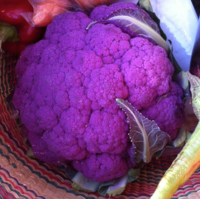
Photo from wikipedia
BackgroundThere is growing evidence that some devastating biotic invasions are facilitated by microbial symbionts. The red turpentine beetle (RTB), an innocuous secondary insect attacking weakened trees in North America, has… Click to show full abstract
BackgroundThere is growing evidence that some devastating biotic invasions are facilitated by microbial symbionts. The red turpentine beetle (RTB), an innocuous secondary insect attacking weakened trees in North America, has formed an invasive complex with the fungus Leptographium procerum in China, and this invasive beetle-fungus symbiotic complex is capable of attacking and killing healthy pines. A previous study demonstrated that three Chinese-resident fungi, newly acquired by RTB in China, induce high levels of a phenolic defensive chemical, naringenin, in pines and this invasive beetle-fungus complex is suppressed by elevated levels of naringenin while the beetle uses its gallery as an external detoxification system in which particular yeast-like fungi and bacterial species biodegrade naringenin. However, the functional roles of key microbial players in the symbiosis, contained within the microbiome of the bark beetle gallery, have not been well elucidated.ResultsIn this report, the symbiotic naringenin-degrading microbiota were found to increase RTB survivorship in the presence of induced host defenses, and potential genes associated with degradation pathways were discovered. While fungi in the gallery microbiota had little involvement in naringenin degradation, bacterial community structure within the beetle gallery was highly correlated to naringenin degrading activity. Phylotypes of the Gram-negative bacterial genus Novosphingobium, which possessed genes involved in degradation pathways, were highly correlated to naringenin degradation activities and RTB associated with an isolated species of this genus acquired protection against naringenin and gained fitness.ConclusionsOur results demonstrated that symbiotic bacterial community of RTB galleries enhances the survivorship and overall fitness of invasive beetles by degrading the host phenolic naringenin, ultimately overcoming the tree defenses and facilitating the success of the invasive beetle-fungi complex. This dynamic interplay between the invasive insect pest and multipartite microbes suggests a putative mechanism in invasion ecology for mitigating biotic resistance to symbiotic invasion.
Journal Title: Microbiome
Year Published: 2018
Link to full text (if available)
Share on Social Media: Sign Up to like & get
recommendations!